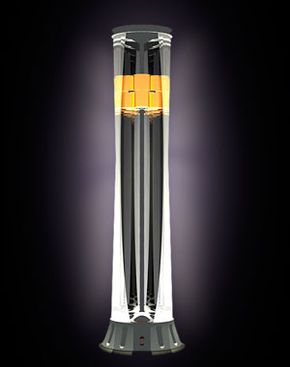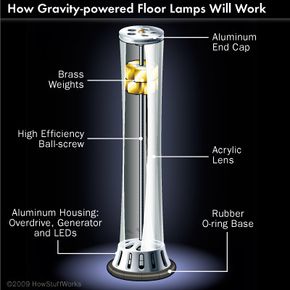When you hear the phrase "alternative energy," chances are your mind goes to windmills and solar panels, or perhaps fields of corn. Few people think of human beings as a renewable energy source. But a new lamp design taps into just that idea.
It's not a new concept: Wind-up watches and clocks, and even hourglass-style timekeepers, have relied on humans as energy sources for many centuries. A person winds it up or flips it over, and the device has a renewed supply of potential energy with which to operate. Modern inventions like bicycle-powered blenders and kinetic battery chargers draw on energy stored in the human body, too.
Advertisement
Much like these designs, the gravity-powered lamp envisioned by Clay Moulton, a graduate student at Virginia Tech when his lamp won second place at the 2008 Greener Gadgets Design Competition, relies on people for power. In this case, the people don't wind a gear or pedal a bike; instead, they lift a series of weights back to their starting point. The Gravia lamp is powered by the falling motion of those weights, also known as gravity.
It's an interesting idea, using a (presumably) limitless resource like the pull of gravity to generate power. And while the Gravia lamp requires some advances in technology before it becomes a viable product, the concept is worth checking out. In this article, we'll get into the Gravia lamp and see what makes it glow, and we'll find out why a gravity-powered lamp may be an alternative-energy gadget to keep an eye out for.
Perhaps the most brilliant part of the Gravia design is its simplicity. Let's start by looking at the lamp's inner workings.
Advertisement


